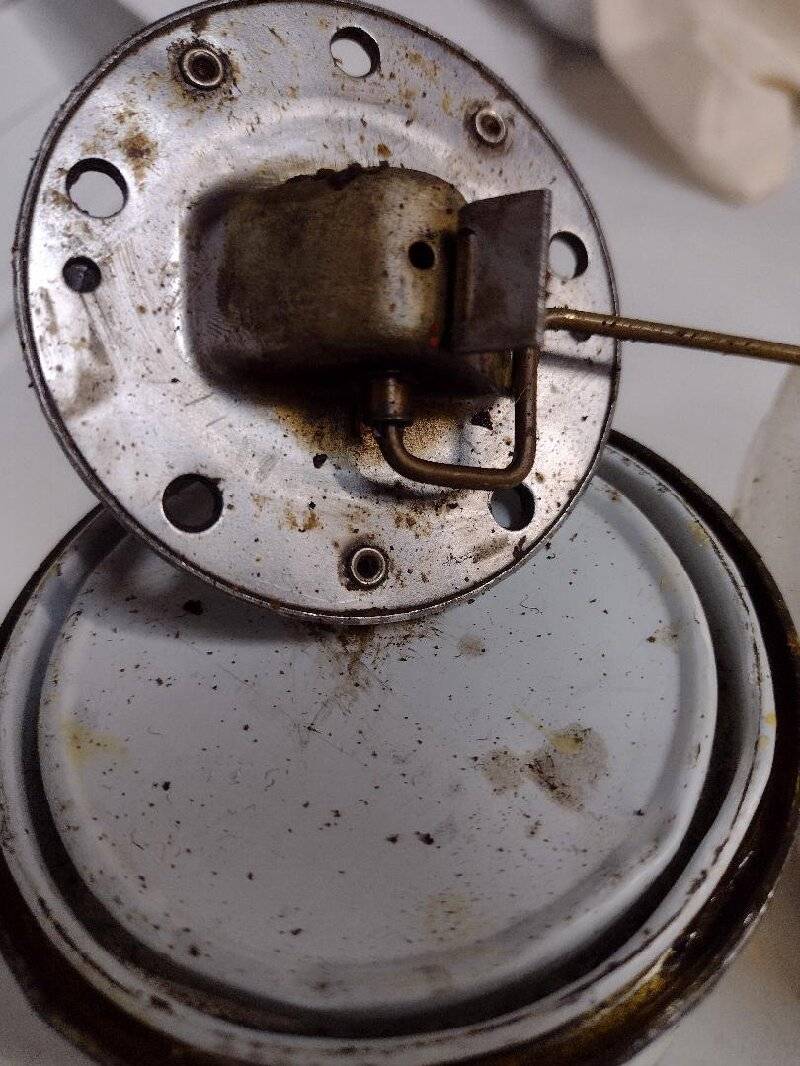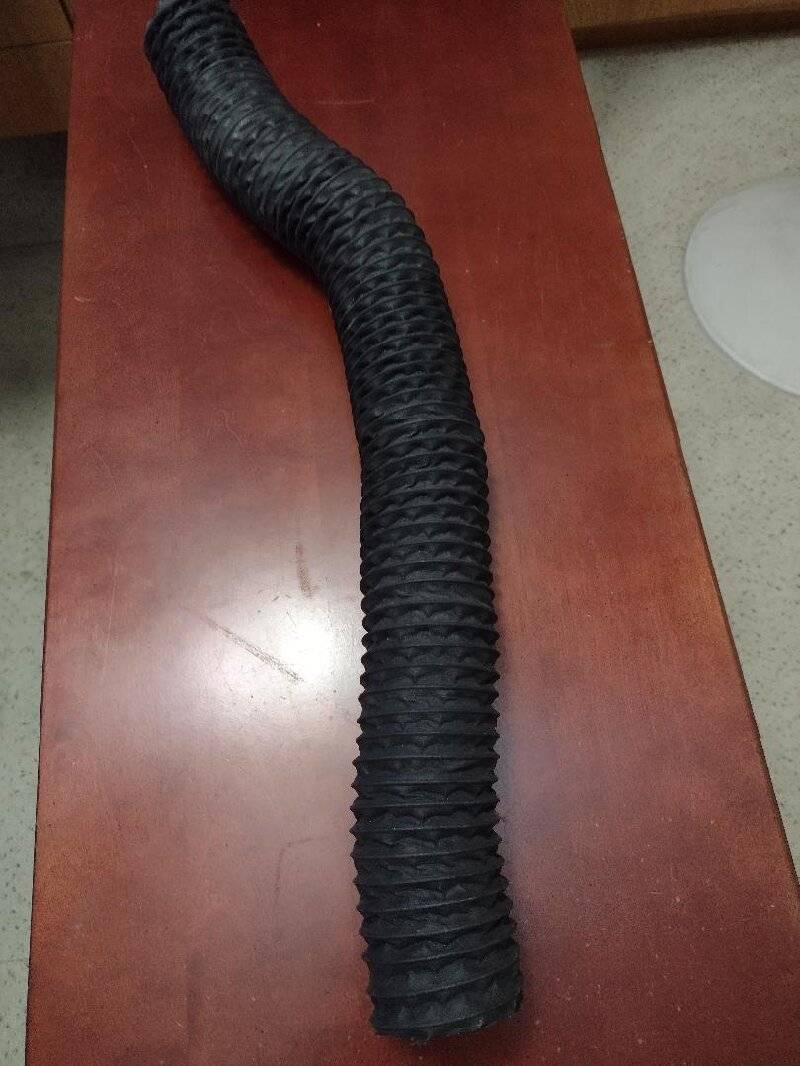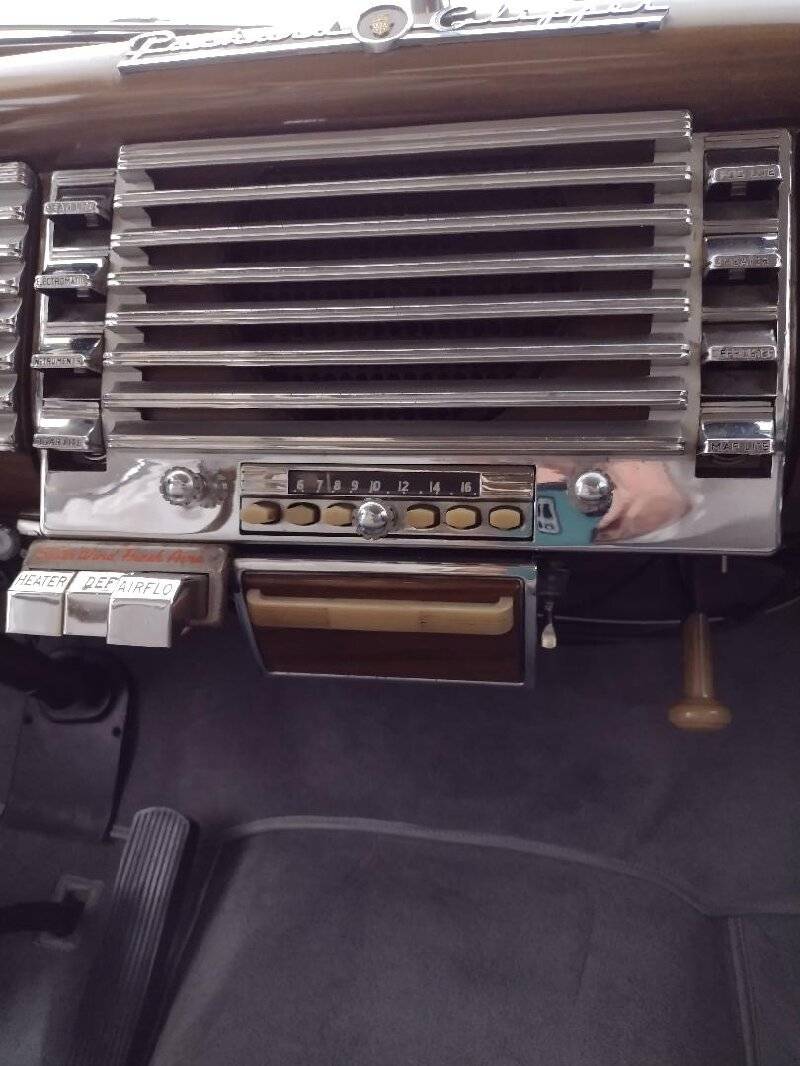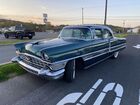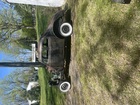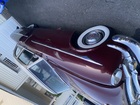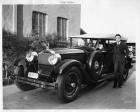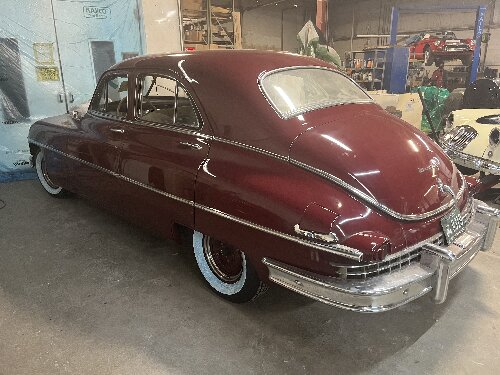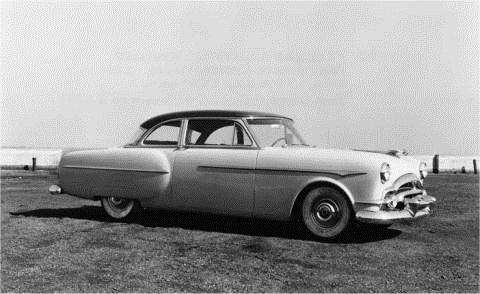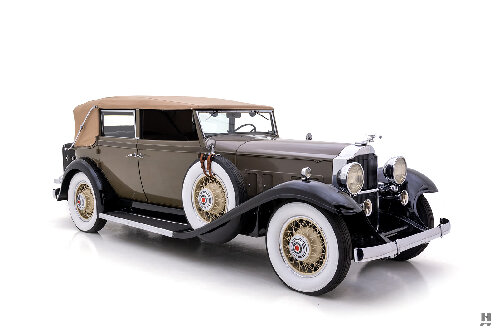|
Re: "Electrify" Old Cars? Why?
|
||||
|---|---|---|---|---|
|
Home away from home
|
If you're decrying electrifying old cars, we're with you for the same reason we loathe "retro rods" and the rest of the nonsense. Either have an old, vintage, "Classic," collector, Edwardian, brass, special interest original, or buy something new. Not a fan of what Tim Cole aptly sums "junk rods" or Frankencars.
But let's not live in the past or slam new technology. James Ward Packard, George Westinghouse, Steve Jobs, Bill Gates and others didn't, or we wouldn't have Packards or be on this or any website today. Let's not lament "free" energy, either, because because as you observe, there's no such thing, and all energy has its costs. Car & Driver magazine awarded Tesla their Car of the Year award awhile back, and C&D has for years pandered to the "eco-weenie" hating redneck contingent who think there's something manly about bombing around the 'burbs in a noisy, pristine, always empty pick up truck fashion statement. A friend has a Tesla. It is a magnificent conveyance whatever its propulsive force. Again, if we're serious about a future in which internal combustion cars don't remain the whipping boy for the "round up the usual suspects" crowd, perhaps we listen to the world's scientists, who agree in every poll, including one a decade ago of 2,000 UN scientists, another of 11,000 reported in the 11/5/19 Bloomberg News, that overpopulation remains our by far biggest problem, their words "bigger than climate." Meanwhile, UN and other vetted studies show animals raised for meat and dairy create more greenhouse gas than all the world's cars, trucks, buses, trains, planes, ships combined. So if we're serious, instead of attacking EVs, going the us/them route, or dismissing anything we don't want to face as "politics," we revise our antiquated, agrarian tax code from when more babies meant more hands to work the family farm, half of all children not surviving beyond age four, to instead encourage (not mandate) having "one or none," and adopting. We also follow the lead of Lewis Hamilton, the world's leading Formula One driver, in adopting a plant-based, vegan diet, a win-win-win because until people control what they ingest, health care public or private will never be affordable. Simple, if not EZ. Packards were once driven by Supreme Court justices, university presidents, leaders, writers, scholars, Walter Damrosch, J. Robert Oppenheimer, the leading choice of the world's embassies. Instead of parsing, equivocating, debating, buck-passing, let's get cracking. This is a hobby for many of us embracing both the best of the past and the present. Carly Simon sang truth in "....these are the good old days."
Posted on: 2023/7/24 13:11
|
|||
|
||||
|
Re: Which oil should I use?
|
||||
|---|---|---|---|---|
|
Home away from home
|
MD16, here again, from a couple years ago:
"We'd thought the ZDDP business long since vanquished by stake through heart. The below is from a post made several years ago after discussion with major oil company techs, themselves owning various flat cam engines, one relating that he'd also owned a '41 Packard. But first, everything from Packard's publications through MoToR's Auto Repair Manuals of the '30s, '40s, '50s lists 20W winter, 30 summer for Packards, and nearly all other cars. 20W/50 is better suited for a worn out engine flogged in Arizona. Its thickness prevents it reaching all the critical metal-to-metal wear spots on cold start up. ZDDP/zinc is a another red herring. Today's zinc levels were "lowered" back to where they were in the '70s and before, after too much zinc hindered catalytic convertors. And we didn't hear zinc hysteria back then. You can trace it to a couple curmudgeons in the CCCA with flathead Cad 346-ci V-8s which use, unlike Packard's hardened steel, a chintzy bronze timing gear. They had trouble after rebuilds, so of course it's the motor oil. Some Joe Sixpaks w/ the usual backyard hot-rodded SBC 350s had problems after their rebuilds, also blamed the motor oil. The internet can be akin to shouting fire in a crowded theater. A Kendall/Conoco-Phillips engineer, himself with a highly-tweaked '67 Camaro with -- like many of our Packard engines (the big '30s seniors had the quality of a roller cam, but then even Packard/R-R Merlins have flat cams)-- a flat cam engine with m u c h higher valve spring pressure, explained that a friend of his was the one who produced the Indiana Region of the CCCA's 15W/40 "Classic Car Motor Oil," (advertised in Hemmings, etc.) and that even Kendall started marketing some oil with higher zinc because, he laughed, "If you want to stay in business, you either give people what they want or think they need." This petroleum engineer gearhead himself uses the same off-the-shelf semi-synthetic Kendall GT1 10W-30 i use in my '47 Super Clipper's inline eight lawnmower engine. I use Kendall because i came of age on the East Coast, liked the smell and old color (since abandoned), akin to Packard engine green, being a sucker for marketing, but an exhaustive Consumer Reports feature compared various major brand motor oils of the same weight used 60,000 miles in a fleet of NYC cabs and found "little or no discernible difference among any of them." ZDDP additives only settle at the bottom of your sump. And too much zinc unleashes other woes:https://aaoil.co.uk/123579-2/ Much ado about nothing. The cheapest off-brand motor oil available today streets ahead of the best from the '60s, let alone the '40s. By extension, a Chevron or ExxonMobil petroleum engineer explained to a lifelong auto/aero machinist/mechanic/pilot supercharged '37 Cord Phaeton, Auburn 12/Marmon 16-owning friend that the black molybdenum/graphite chassis grease, whether those brands or Sta-Lube, a factor of eight (8) times better than the orange fiber grease around when our cars new into the '70s. And that exchange was in the late 1970s/1980. Finally, and pardon the verbiage but not being retired as many here gathered, when i do post include what i can: Annual oil changes, certainly at 2,000 miles, are excessive and pointless, given the superiority of modern detergent motor oils, providing the owner not make the common mistake of firing up his car in the garage to show it off for a few minutes to visitors, or driving around the neighborhood, then letting it sit for weeks or months. Never start an engine lest you intend to drive it at least 18 or so miles highway to equalize temperature of block, manifold, head, stave off the formation of sludge, varnish, carbonic acid. A local fire dept. used to fast idle their trucks for 15-20 minutes then shut them off, only to discover they were only wearing their rings. An old mechanic's test was to place your hand on the bottom of your oil pan. If too hot to keep there more than a split second, you got your oil hot enough. I like a stone simple device provided by www.MasterLube.net, which captures your engine's peak oil pressure in an aluminum cylinder, which you can release via hidden toggle to pressurize your engine before starting, when according to McDonnell Douglas, Continental, and the SAE, 80-90% of all engine wear occurs. Tell Kerry McCracken a '47 Super Clipper in Walnut Creek,CA and a quartet of '50s Ferraris near me referred you."
Posted on: 2023/7/10 14:48
|
|||
|
||||
|
Re: Exact replacement float for 1941-47 Clipper gas tank sending unit
|
||||
|---|---|---|---|---|
|
Home away from home
|
Thank you, gents. Of course gas gauges aren't precision instruments. Still nice to have them work the best they ever did leaving Detroit. Soaking the cork in lacquer thinner softens, helps remove the Varathane.
The co-owner of a Packard-only shop said they used to bake the original corks in the sun or use a hairdryer until thoroughly dry, then redip in shellac. But today, is Por-15 good on cork as the 2009 item in Auto Restorer Drs. Grosz shared suggests? If so, that's the ticket. Though the unit itself good, as long as it's off the car, would spraying some electrical or tuner cleaner in the pictured orifice/weep hole be a good idea, in case there's any oxidation? But nothing else, right, no Tri-Flow Superior Lubricant or WD-40? Dr. Hanson (HH56) wondered about the fiber the resistance element wire wrapped in swelling. (The unit's cleaner than the picture suggests. I wasn't finished cleaning off the old gasket, etc.)
Posted on: 2023/7/6 0:27
|
|||
|
||||
|
Exact replacement float for 1941-47 Clipper gas tank sending unit
|
||||
|---|---|---|---|---|
|
Home away from home
|
Installed a NOS gas tank sending unit in my '47 Super Clipper in 1987 after dipping the cork in clear Varathane. Worked fine going on 36 years but now "gas logged."
I don't need to hear about Varathane not being the best. That was then. What's wanted now is what would be the best substance to redip the float after baking it in the hot sun for an afternoon? That, and does anyone know an exact replacement float that will give the same reading at the gauge? Please, no "mights," guesses, only what you've successfully used, where you got it. Again, the unit and dash gauge are a-ok. This is a cork float issue. Every time someone poses the simplest question, instead of hearing only from those who know, we wind up with a dozen reinventing the wheel surmises. Am posting this on the General forum because these cars are pre- and postwar.
Posted on: 2023/7/5 17:23
|
|||
|
||||
|
Fresh Air Intake duct 1942-47 junior Clipper
|
||||
|---|---|---|---|---|
|
Home away from home
|
If your car has the Fresh Air Intake option described in the recent General thread, "Anyone know a source for the chintzy original 1941-47 duct hose?," you're in luck. The picture attached is of a piece not quite long enough for 1941 and 1942-47 senior Clippers, but ideal for the 1942-47 junior Clippers with their seven-inch shorter front clip.
This is authentic looking but better material than the short-lived original. Like the original, however, this is flat black, with no sheen. This section is 32" relaxed, 38" stretched, the latter how the supply house cuts it, and why I have this new, unused piece. It may also fit 1948-50 tubs and others. You won't find this once common three-inch diameter material at any Packard, Ford, GM vendor. $29 inc. shipping.
Posted on: 2023/7/5 3:02
|
|||
|
||||
|
Re: 359 Noisy Lifters
|
||||
|---|---|---|---|---|
|
Home away from home
|
Eric, heed Wat. Why are you running molasses in your engine? A friend w/ a 292-ci Zephyr V-12, which of course has hydraulic lifters, decried their noise.
I talked w/ a pair of lifelong Zephyr guys who on hearing his lament, shared the same first question and suggestion: "Why is he running glue (or less polite) in his engine? Tell him to change to 10W/30, add a pint of Marvel Mystery Oil, then drive the hell out of it for 30-50 miles." Meanwhile, at the risk of sounding like a broken record, enter zinc/ZDDP in the Search box here. Short story: The ZDDP scare was just that, but marketing abhors a vacuum. Just use any major brand 10W/30 and don't reinvent the wheel. Packard service departments coined a good expression: "Factory standard." 50W oil is hardly factory standard. And really, avoid any product called "Classic."
Posted on: 2023/7/2 22:34
|
|||
|
||||
|
Re: Anyone know a source for the chintzy original duct hose 1941-47 Clippers?
|
||||
|---|---|---|---|---|
|
Home away from home
|
HH & Company,
No idea if the San Luis Obispo Packard dealer used the Packard Fresh Air kit or not without seeing details of another in a car. Stewart-Warner sold three million South Winds from the '30s through early '50s for 6-volt US cars. Maybe in Buffalo or Duluth having heat "within 90 seconds" a draw, but again, the idea of tapping gasoline so to do instead of the commonsense hot water heater seems wasteful, silly even. There are several detailed explanations of the South Wind heater on YouTube, inc. one operating in a '41 Plymouth. You'd think i was pulling a fast one or facing excommunication for paying less than half for similar but superior material from a helpful young woman at the organ supply company Steve58L8134 graciously steered me to. The natives are restless, indeed. One of our compatriots above seems all but ready to launch litigation against this 46,000-sq.ft. Erie, PA pipe organ parts manufacturer established in 1924, first year for Packard's straight eight. Here's a shot of all eight of my dash switches. In descending order from left: head lights, Electromatic, instruments, cigar light. From right: fog light, heater, defroster, map light. Presume Packard used the downmarket spelling merely to fit on the switch tabs, as a company advertising in National Geographic, the New Yorker, and Literary Digest knew better. My heater and defroster switches are immovable, suggesting they are dummies, so will await concurrence from any other 1941-47 Clipper owners whose cars left the factory sans heater. Other than what's on my Vehicle Registry profile here, that's the story, gentlemen.
Posted on: 2023/7/1 22:33
|
|||
|
||||
|
Re: Which oil should I use?
|
||||
|---|---|---|---|---|
|
Home away from home
|
Moody, listen to Packard Don. The Search box will furnish every last drop of information. BTW, the zinc/ZDDP nonsense has long since been debunked; visit the Search box. Kendall Conoco Phillips and other engineers themselves owning flat cam engines with vastly higher valve spring pressures than our old inline lawn mower engines explained.
Kev knocked himself out setting up the most user friendly, comprehensive marque site imaginable, and people don't bother to use it. We all have specific queries now and then and there are some knowledgeable gents here for those, but really, most of the questions posted have been answered, as Packard Don points out, hundreds of times. Literally. And many of those questions are basic internal combustion engine queries -- hardly Packard specific -- that Googling and YouTube have explained to death with EZ cartoons, et al. We live in a nation where people want to push buttons, no longer read anything not available via a mouse. There's a staggering amount of comprehensive information in the Literature Archive alone; third link below Main Menu on the left of this well-organized site's homepage. BTW, i'm not the only one who visits this site simply because there are treble, even quadruple, the number of people in this country as when our Packards were built, and the single drivable day of the entire year for us other than 6am weekends is Stupor Bowl Sunday, so PI gives us an autoholic fix.
Posted on: 2023/7/1 6:29
|
|||
|
||||
|
Re: New member with new Packard
|
||||
|---|---|---|---|---|
|
Home away from home
|
Perfect as is. Don't change a single thing but the oil, coolant, grease.
Posted on: 2023/6/29 21:24
|
|||
|
||||

 orifice.jpg (115.89 KB)
orifice.jpg (115.89 KB)